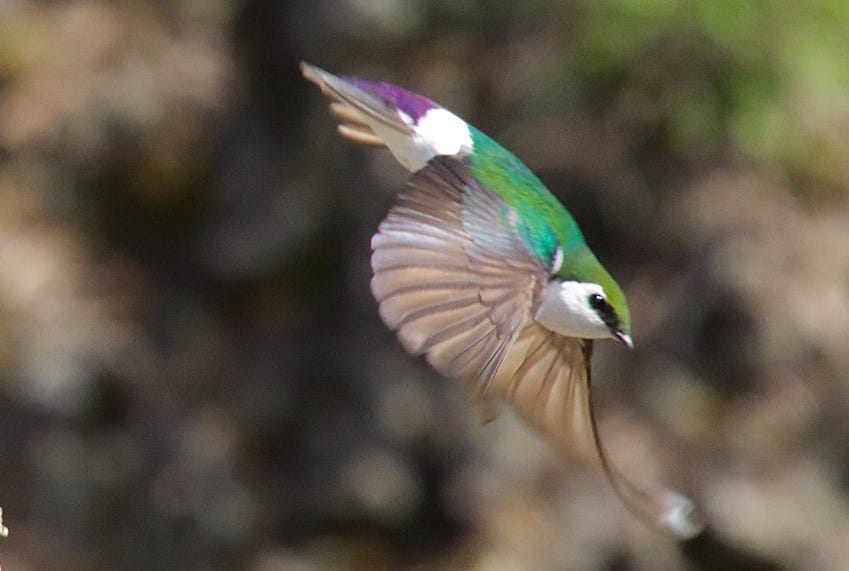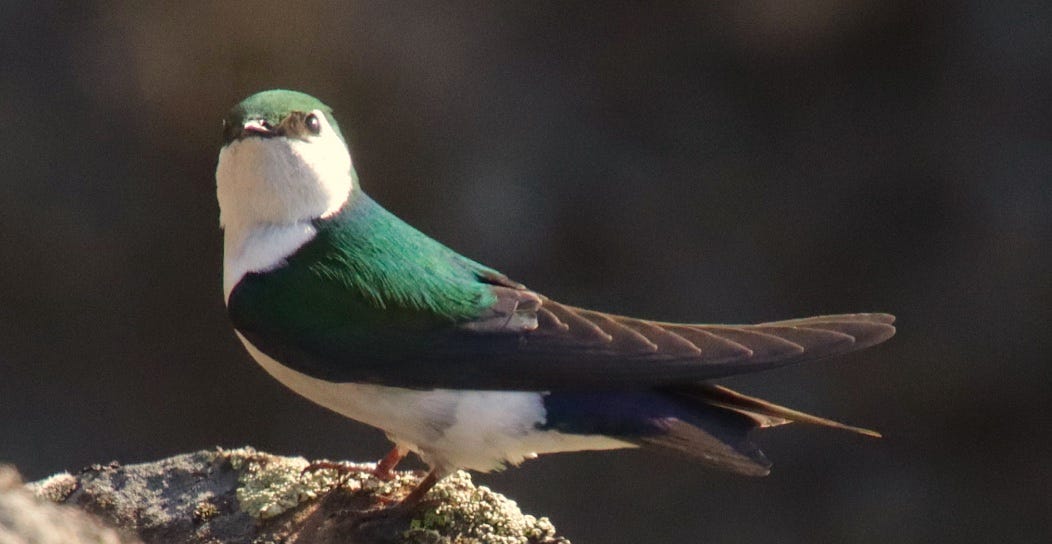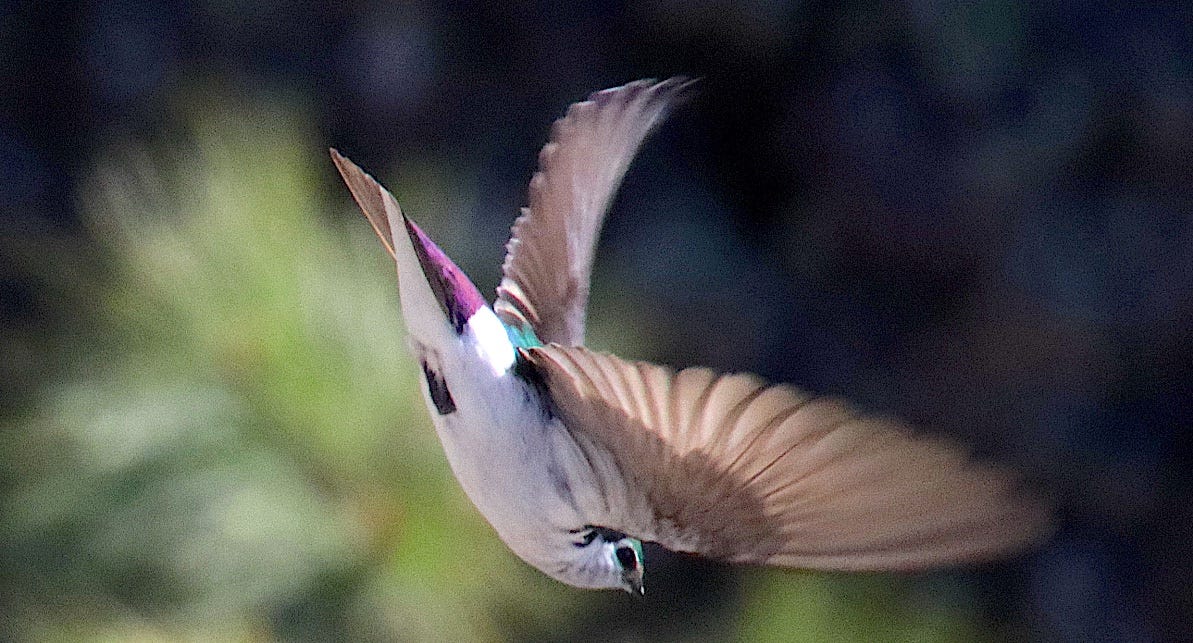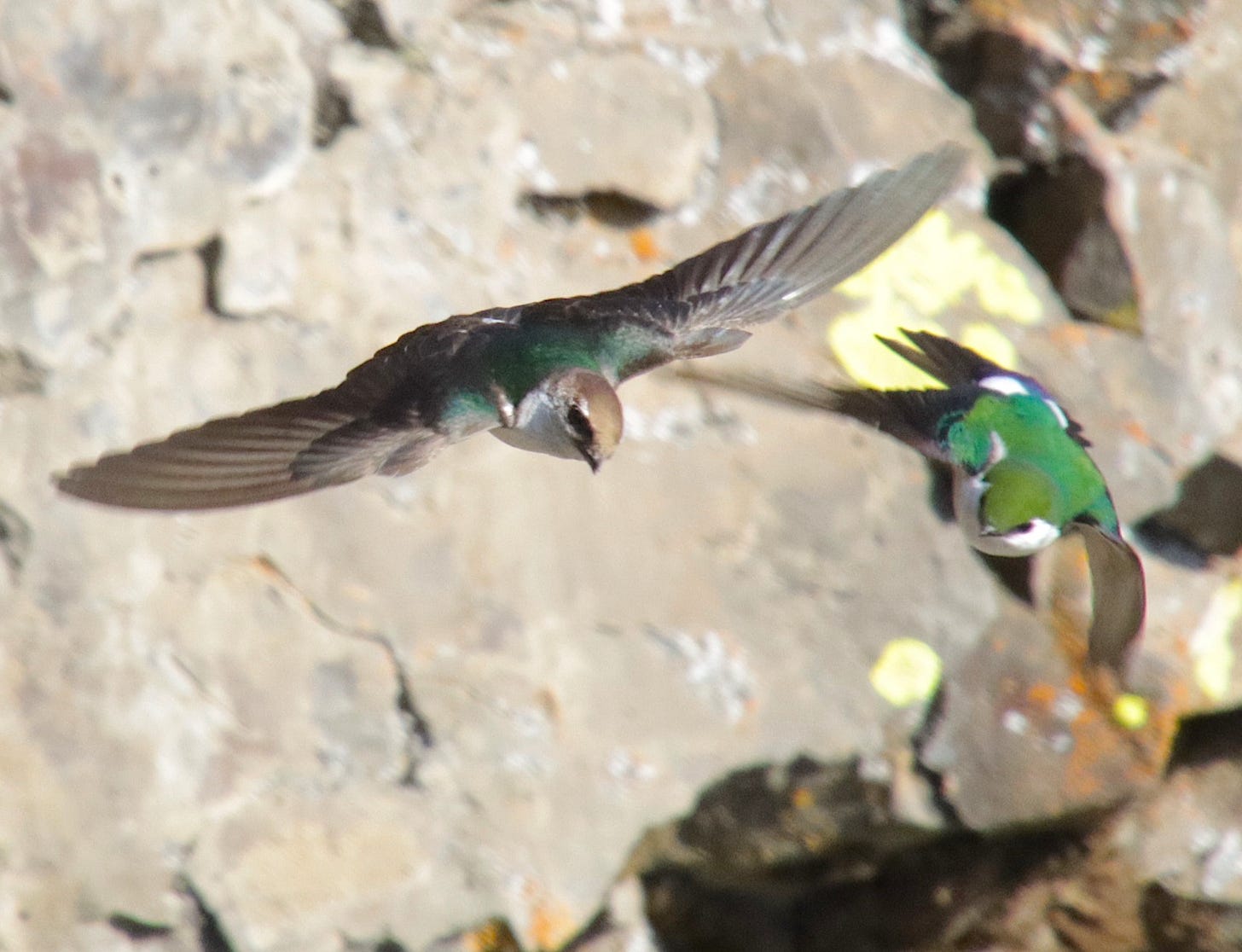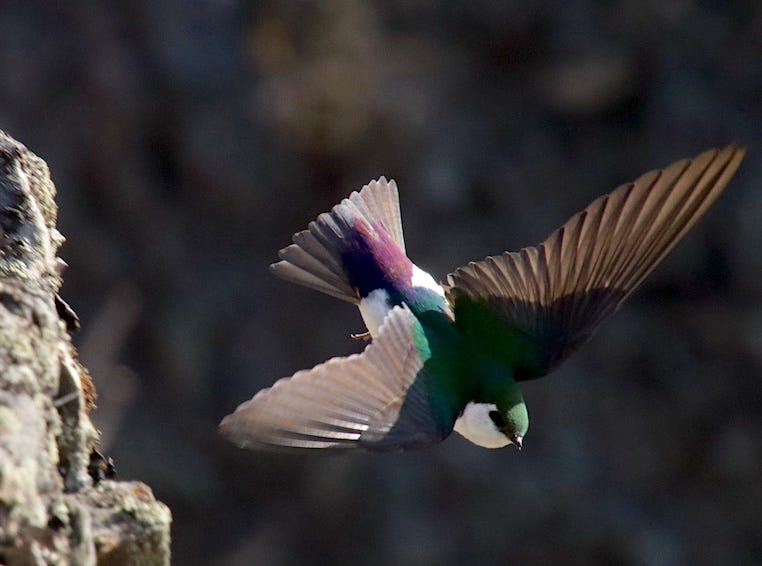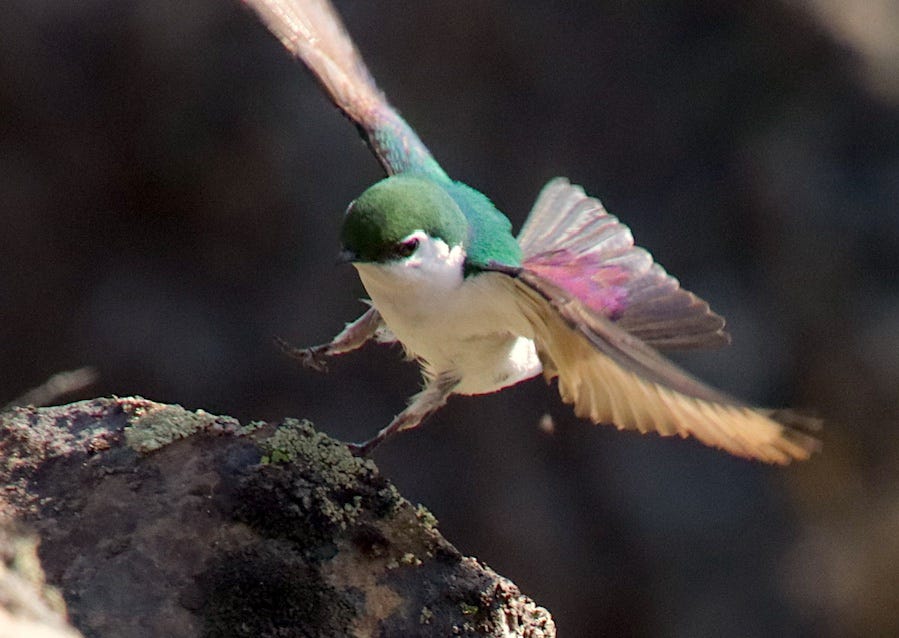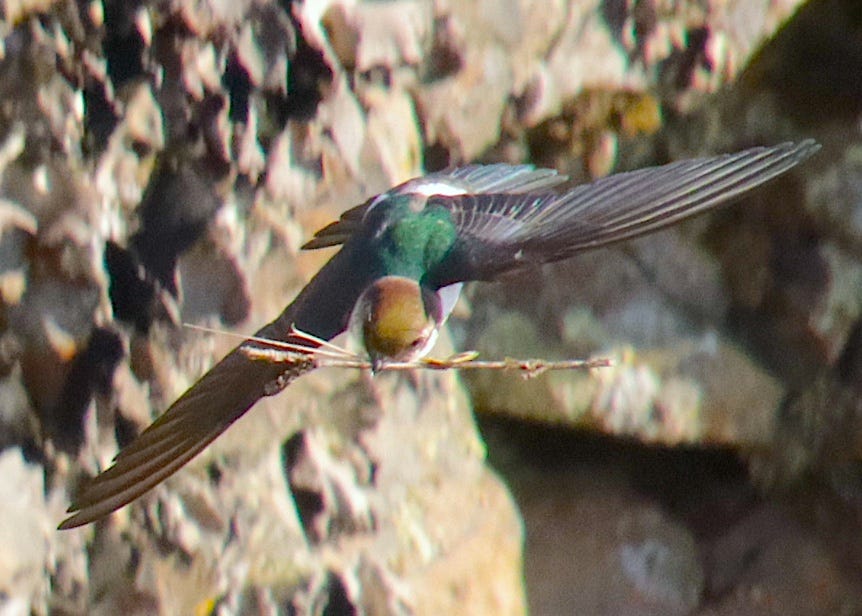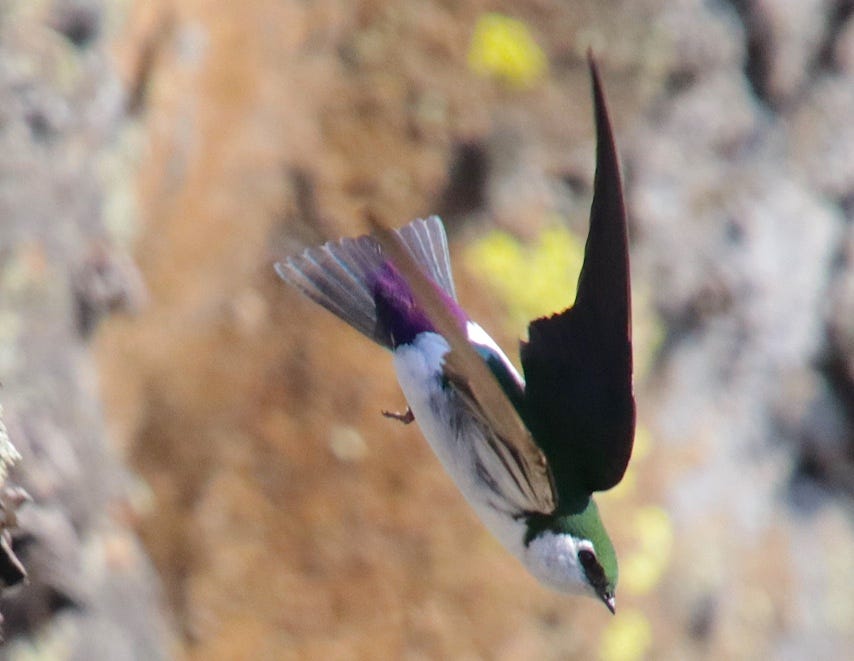Male Violet-Green Swallow, in a sunward swoop Monday morning…
The flash of the wings, in the blink of an eye…
Honestly, I was more than a little grumpy adjusting to a new camera this winter after “Bruce”—my Canon digital SLR—was stolen from my trunk last October. I don’t yet have a new name for the new camera (it takes a while) and we didn’t get along on our first and second dates. Plus, I miss my 400 mm lens, especially for photographing birds and other wildlife. So, I needed an attitude check, and that’s just a life lesson.
Next, I needed to practice. Especially when photographing wild things, fractions of a second matter and it’s a combination of study, planning and honing instincts and reflexes. Seriously, it’s like trying to hit a curveball. When it comes to my favorite subject for this spring—Violet Green Swallows—it’s also about safety. They love to dive and swoop along cliffs where they often nest, and I have to be able to move quickly but with some confidence that I’m not going to lose balance and, well, you know…
So far so good. I have my Sibley’s hard copy bird guide but I really like these excerpts, about the Violet -Green Swallow, from the Cornell University Ornithology Lab and their “All About Birds” website. For starters, the latin name for the swallow is Tachycineta thalassina which means “fast moving” and “sea green.” Perfect, but the flash of purple on white, in the males, is electric.
The text between the photos, below, is from the Cornell Lab folks.
Female swallow (left) with male companion beneath her wings
•These aerial insectivores perform acrobatic stunts over lakes and streams high in the sky in search of flying insects. Violet-green Swallows can look dark at first, but their true colors come to life when sunlight illuminates their metallic green backs and iridescent purple rumps. They are a common sight in the West in spring and summer, but they vanish to Mexico and Central America for the winter.
•Violet-green Swallows have been recorded flying at 28 miles per hour—a pretty respectable speed considering that the Peregrine Falcon, the fastest bird of prey, averages about 25–35 miles per hour in traveling flight.
•A pair of Violet-green Swallows was observed assisting a pair of Western Bluebirds in raising young. The swallows guarded the nest and tended the bluebird nestlings, and after the bluebirds fledged, the swallows used the nest site for their own young.
Female with nesting material
•The oldest recorded Violet-green Swallow was a male, and at least 9 years, 1 month old, when he was recaptured and rereleased during banding operations in California in 1993. He had been banded in the same state in 1985.
bonzai!
—tjc





